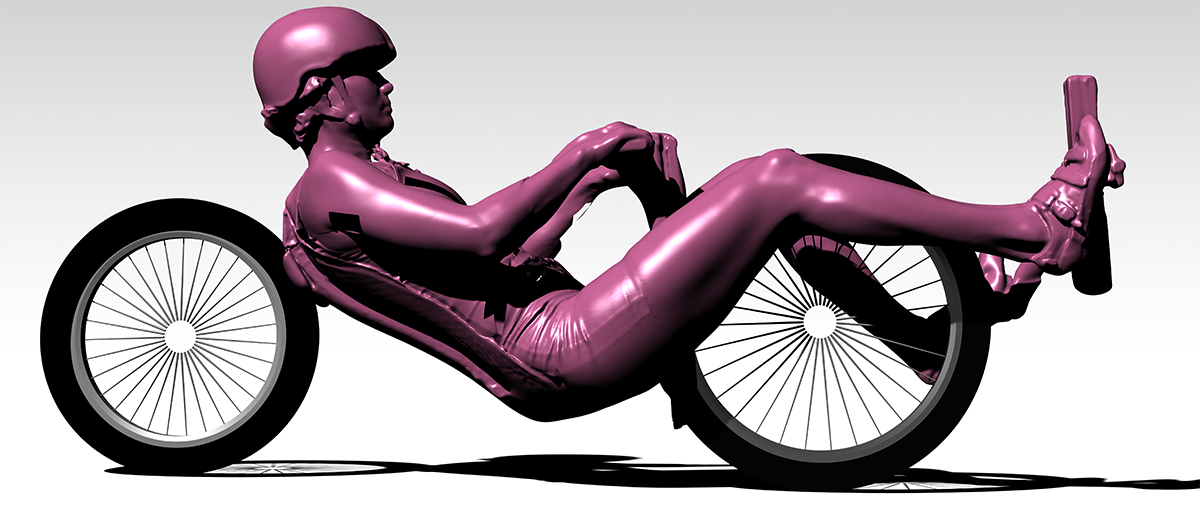Every millimetre counts when you design the smallest and fastest human powered bicycle. The Human Power Team models its cyclists in 3D to create a perfect fit.
Model of the cyclist. (Image: Human Power Team)
Engineers in the Human Power Team started working on the successor of the VeloX 8, their winning recumbent bicycle at the last World Human Powered Speed Challenge 2018, which reached a top speed of 120 kilometres per hour. Two female cyclists will race in the VeloX 9 at the Challenge of 2019, hoping to break the record of 121.8 kilometres per hour. The Human Power Team took one of the first steps towards a new design by making a 3D model of the cyclists. Used as input for the design, the Team may make the shell of the VeloX 9 smaller, resulting in lower air resistance.
Making the 3D model
The 3D model was made at the Industrial Design Engineering Faculty’s BodyLab using multiple cameras. The cyclists were seated in a reclining position similar to the design of the VeloX, and cycled during the scanning process. The challenge was to make a light-weight moveable set-up, open enough for the cameras to scan the athletes without any trouble. Several scans were made, which will be merged in the design software for the VeloX 9.
How will the scans of the two cyclists be combined in one model? Margot Honkoop, Sports Engineer at the Human Power Team, explains the process. “We will overlap the scans of both athletes to show where more space is needed. For example, if one athlete is taller, she may need more leg room.”
Improvements in the 3D modelling technique
This is the third time that the Human Power Team is using this technique, which is optimised and improved every year. This is necessary, since the 3D model does not guarantee that the VeloX fits like a glove. “Last year, the hips of one of the cyclists did not fit the bicycle. We had to make last minute changes,” Honkoop said. “This year’s set-up was much more rigid so that the scan focussed on leg movements instead of the movement of the set-up. This makes the model more accurate, hopefully leading to a perfect fit straightaway.” And this perfect fit might just be what the Human Power Team needs to break the record in 2019.
Nina van Wijk / science editor trainee



Comments are closed.